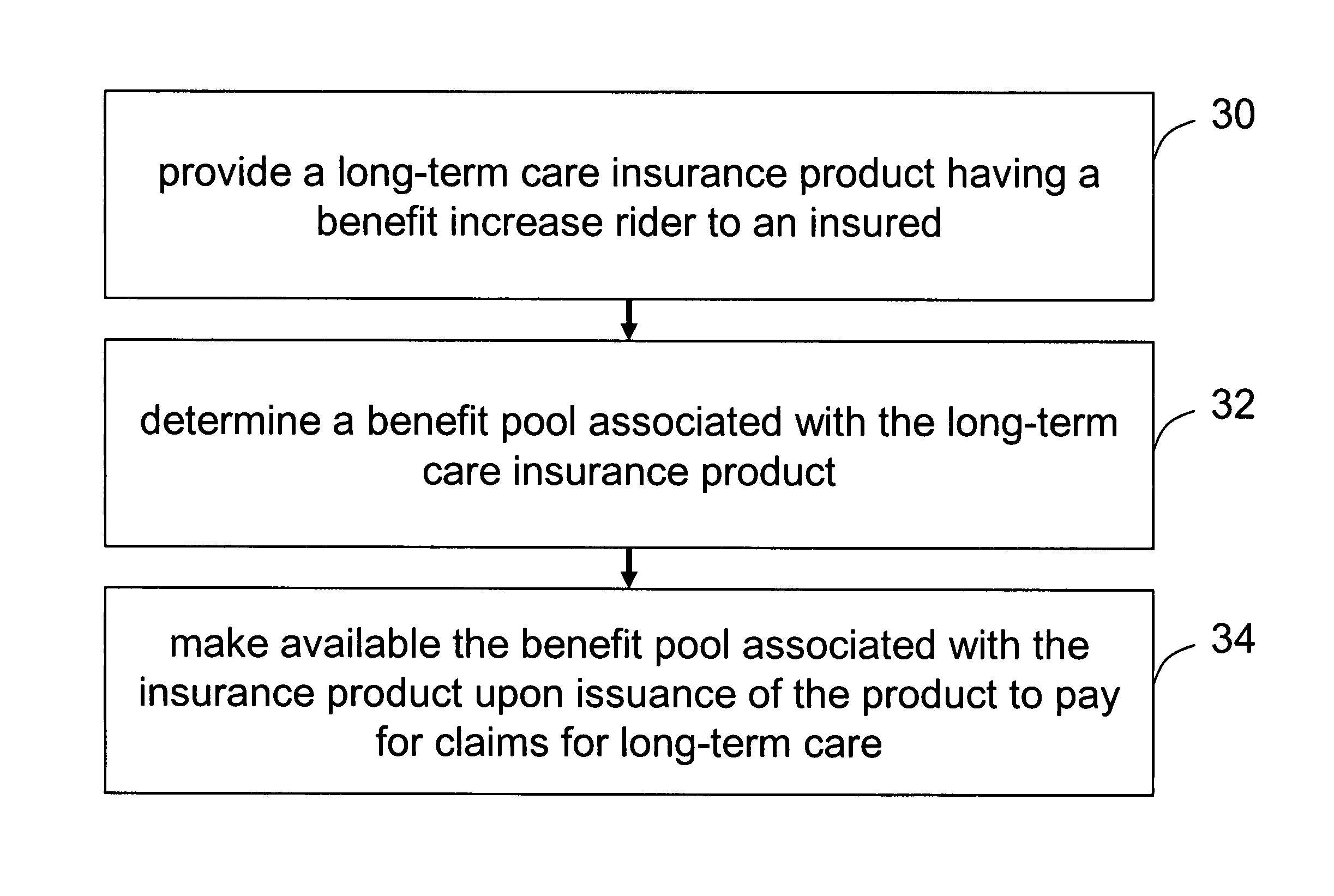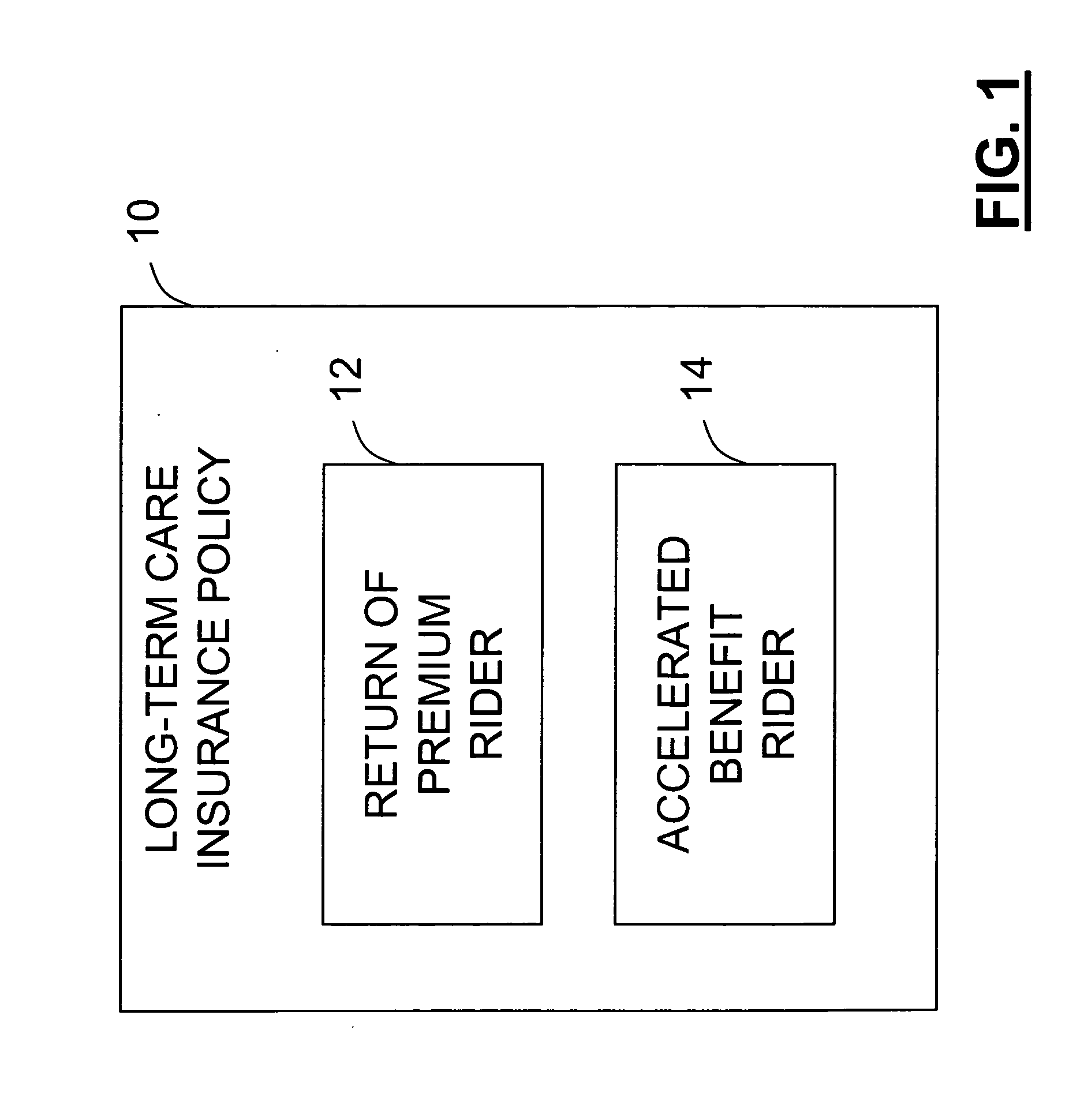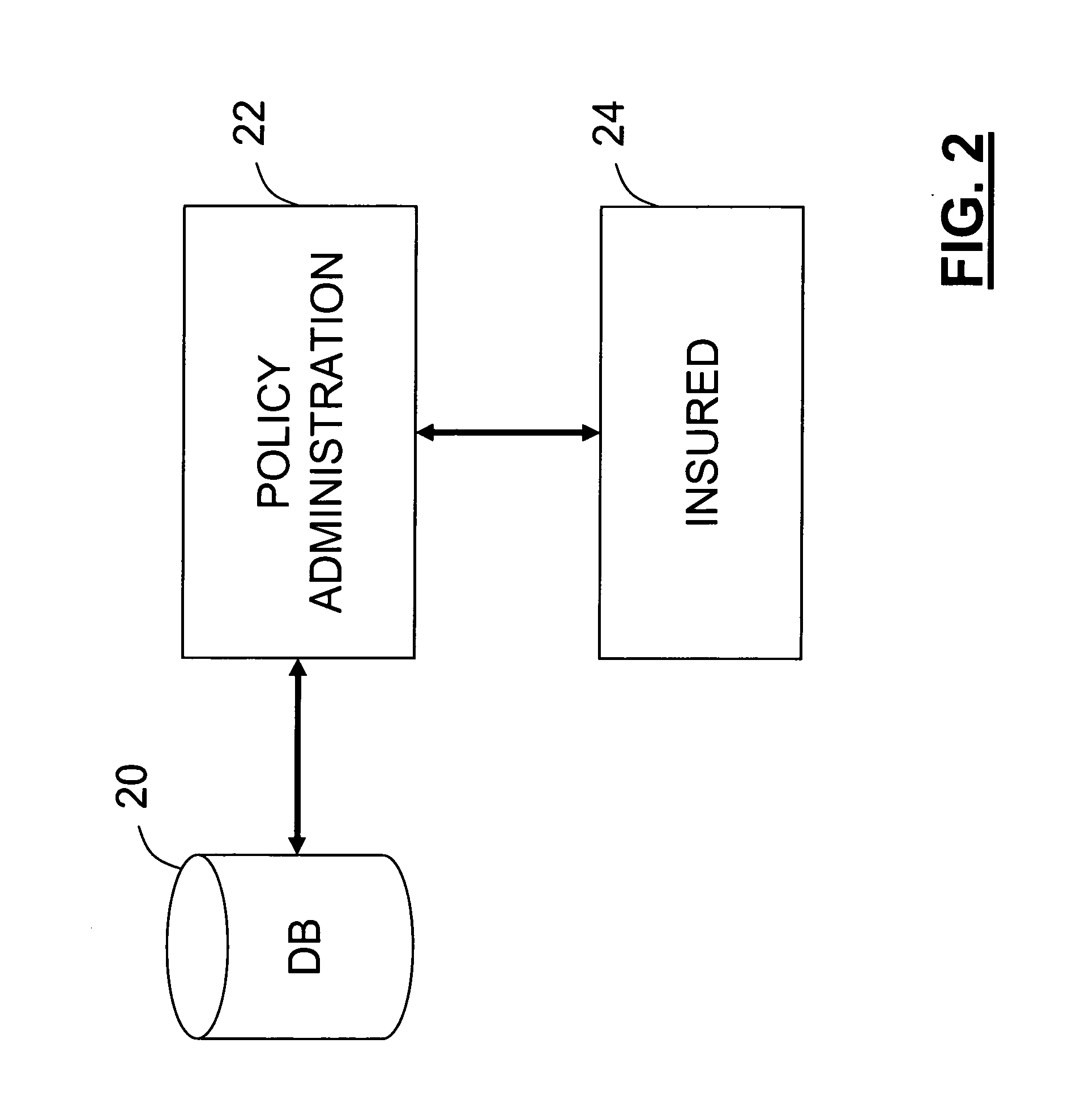Method and system for long term care insurance product
- Summary
- Abstract
- Description
- Claims
- Application Information
AI Technical Summary
Benefits of technology
Problems solved by technology
Method used
Image
Examples
Embodiment Construction
[0027] The present invention provides for two types of riders to be used with a long-term care insurance policy. The first type of rider is a maximum lifetime benefit acceleration rider. The second type of rider is a return of premium rider. Each of these riders when used alone or together provide significant advantages to a long-term care insurance policy.
[0028]FIG. 1 provides a pictorial representation of one embodiment of an insurance product of the present invention. As shown in FIG. 1, a long-term care insurance policy 10 has an associated return of premium rider 12 and an associated accelerated benefit rider 14.
[0029] The accelerated benefit rider 14 provides a compromise for target buyers, such as those in their 50's by creating a benefit pool of money that would equal approximately 15-20 years of benefits in the event of a claim very soon after purchases, grading down to the three to five years of benefit pool by the time they reach the more typical claim age of 80-85. Thi...
PUM
 Login to View More
Login to View More Abstract
Description
Claims
Application Information
 Login to View More
Login to View More - R&D
- Intellectual Property
- Life Sciences
- Materials
- Tech Scout
- Unparalleled Data Quality
- Higher Quality Content
- 60% Fewer Hallucinations
Browse by: Latest US Patents, China's latest patents, Technical Efficacy Thesaurus, Application Domain, Technology Topic, Popular Technical Reports.
© 2025 PatSnap. All rights reserved.Legal|Privacy policy|Modern Slavery Act Transparency Statement|Sitemap|About US| Contact US: help@patsnap.com



